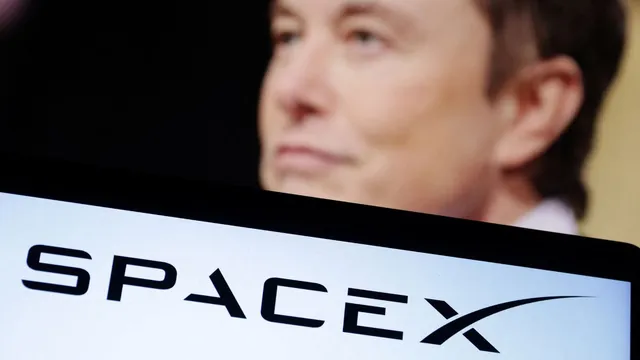- By Alex David
- Mon, 10 Nov 2025 01:53 AM (IST)
- Source:JND
SpaceX recently unveiled another batch of Starlink satellites to its global satellite internet network. Their Falcon 9 rocket launched from Vandenberg Space Force Base in California on November 6, 2025 carrying 28 satellites for the Starlink Group 11-14 mission – part of SpaceX's initiative to bring high-speed broadband internet service worldwide, especially to remote or underserved areas.
SpaceX Starlink satellites now number approximately 8,800 worldwide, with over 2,600 launched from 2025 alone.
Starlink Group 11-14 Launch Details
The mission was flown with the Falcon 9’s first-stage booster B1093, which was on its eighth flight. Following a successful liftoff, the booster also performed its deceleration burns and safely returned to earth, landing gently on SpaceX’s drone ship “Of Course I Still Love You”, which is situated in the pacific (about 8 minutes subsequent to launch). The rocket’s upper stage went on to release the 28 satellites into low Earth orbit (LEO), thickening the web of SpaceX’s sprawling new Starlink constellation.
ALSO READ: Google Maps India Gets Gemini AI Integration: Smarter, Safer, And More Localised Navigation
It was the 142nd launch of a Falcon 9 since SpaceX began flying missions in 2010 and the company’s hundred-and-second Starlink flight this year, a demonstration of its unparalleled ability to dominate space on an intercontinental basis.
Starlink’s Expanding Constellation
The Starlink system now includes nearly 9,000 operational satellites, all working together to beam high-speed, low-latency internet down to users all over the world. The service is designed to cover the gaps in connectivity where traditional broadband can’t reach or falls short.
Starlink has already expanded its services to the maritime and aviation sectors, emergency communication in disasters, and remote scientific missions. The network’s ubiquity in remote locations has made it an indispensable resource for governments, enterprises, and consumers all over the world.
SpaceX’s Vision for Starlink
SpaceX’s long-term ambition is to develop a constellation of tens of thousands of interconnected satellites that will provide “seamless” internet coverage so you’d have equivalent signal strength in rural Montana or on the streets of Manhattan. The company’s laser-linked satellites can talk to one-another without having to communicate with a ground relay, reducing the time it takes for data to transfer between satellites and users on Earth.
The income generated by the Starlink service would supposedly help to fund SpaceX’s larger objectives, including financing its Mars colonisation program via construction of the Starship rocket system.
Concerns Over Space Traffic and Debris
Though the expansion of Starlink is a technical milestone, it also represents deeper concerns about orbital congestion and space junk. There are now more than 10,000 satellites in orbit — thousands more are planned by many companies — and the threat of collisions is becoming greater. Some analysts warn that unregulated debris could endanger other satellites and future space missions.
The Latest on Starlink The most recent generation of Starlink satellites are outfitted with collision-avoidance systems and the ability to deorbit into a low orbit when they age. When they are decommissioned, the satellites are intended to burn up fully on re-entry to the Earth’s atmosphere, reducing debris.
Looking Ahead
The Starlink Group 11-14 mission is allowing SpaceX to solidify its lead in terms of the sheer velocity with which it is now able to launch and iterate on reusable rockets, while also deploying more satellites for its broadband communication network which reaches all corners of the world. This launch’s achievements also highlight the company’s proficiency at getting large numbers of satellites into orbit and retrieving and reusing rocket boosters for subsequent missions.
SpaceX aims to have more than 9,000 Starlink satellites in orbit by the end of 2025, a key step in building a fully operational high-speed internet network from space. The company’s capacity to establish a tempo of launches that has hovered around one per week demonstrates the foundation upon which modern commercial spaceflight is built: reusability and magnitude.
And with each launch, SpaceX edges closer to its mission: a globally connected Earth that runs on an internet fuelled by universal broadband access from space — and one day, a self-sustaining future out there.

